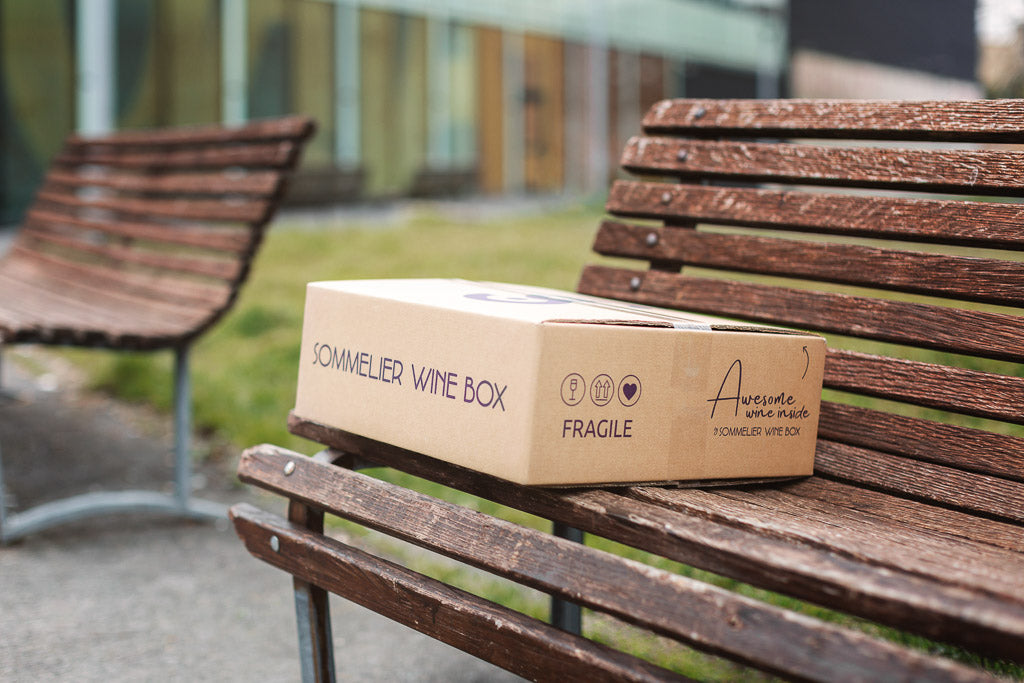If France is the wine country par excellence, Bordeaux is one of the best-known wine territories in the world. Bordeaux not only reaches qualitative heights that make you lose your mind, but since time immemorial it has kept those results constant, year after year, with the makings of champions. Why are Bordeaux wines so extraordinary?
Let's see what you need to know about Bordeaux wines in a few simple points.
Where is the Bordeaux region located
It is a region in the south-west of France, which rises around the city of the same name. The river divides the Bordeaux territory into two: left bank and right bank of the Gironde river.
What does "Bordeaux" mean?
Bordeaux derives from “bord de l'eau” meaning “along the waters”, referring to the Gironde.
The lands of Bordeaux: excellence starts from the land
In the past there was the ocean here, and there is a trace of that past in the soil, which features limestone and marl. Added to this is that the territory is influenced by the presence of the Gironde river estuary, which has resulted in a significant deposit of debris.
The soils are very variable on the surface, not particularly fertile and covered by a thin layer covered in gravel, while the deeper layers are very rich in minerals.
The climate of Bordeaux
Bordeaux benefits from its proximity to the Atlantic Ocean. The climate is maritime: mild winters, cool summers, abundant rainfall but very well absorbed by the soil rich in stones, gravel and sediments.
History of Bordeaux wines
Viticulture in Bordeaux has been practiced since Antiquity but reached the large scale and qualitative peaks known from the seventeenth century onwards, when the Médoc and Graves marshes were reclaimed. No one in the world has a winemaking tradition spanning so many centuries.
What has made the fortune of the region's wines?
Regardless of the quality of Bordeaux wines, a great boost to their fortune is the push from the Anglo-Saxons, who have loved and purchased them intensely since at least the mid-nineteenth century. The United Kingdom therefore constituted an important market for the region's wines. And even today London is a great market for Bordeaux.
Other excellences of Bordeaux
Bordeaux is the wine region that has set the example in the world more than any other. And it is no coincidence that here there is a faculty of oenology ( Ecole d'œnologie ) founded even in the nineteenth century which developed the techniques for producing quality wine which were then adopted all over the world.
The wineries of Bordeaux
Today in the Bordeaux region there are over 13,000 companies, for a vineyard area of over 100,000 hectares.
The black grape varieties of Bordeaux
Merlot is the most cultivated vine in the area, it expresses itself best in the areas of Saint Émilion and Pomerol. Merlot wines are soft and generous even without requiring long refinements.
This is a land where Cabernet Sauvignon expresses itself at its best, especially in the Médoc and Graves.
Another very present vine, Cabernet Franc , which gives wines that smell of cedar wood, with herbaceous notes and the typical memory of green pepper.
Petit Verdot is a supporting grape variety, to infuse acidity and tannin finesse, contributing to the longevity of the wine.
Malbec is also present, another finishing grape, useful for giving color and tannin.
Less used today is Carmenère , a grape with grumpy features that has found a second home in Chile.
The white grape varieties of Bordeaux
Semillon is the main Bordeaux grape for the production of Sauternes desserts
Sauvignon blanc is the grape variety with which Semillon is generally blended, to mitigate its fatness and increase its acidity.
Muscadelle is another aromatic variety to complete the creation of Sauternes.
The Appellations of Bordeaux
At the top of the pyramid are Bordeaux Supérior and Bordeaux .
Then the regional denominations: Graves , Médoc , St. Émilion , Sauternes .
And finally the municipal ones: Margaux , Saint-Estèphe , Barsac .
The main districts of Bordeaux
The most famous district of Bordeaux is the Médoc ; le Graves is known not only for reds but also for important white wines, including Sauternes ; Saint Émilion and Pomerol .
Bordeaux wines
Bordeaux wines by definition means blend. Very famous is the Bordeaux blend , a typical red wine from the region made with Merlot and Cabernet Sauvignon, to which Cabernet Franc, Carmenère, Petit Verdot and Malbec also contribute.
There are over 13,000 cellars and they produce approximately 5 million hectoliters of wine per year, for approximately 120,000 hectares of vineyards.
What is the secret of Bordeaux wines?
Bordeaux wines vary above all depending on the area in which the grapes grow: each Château has its own identity and its own unique and very distinctive characteristics.
In addition to the special conditions and the long winemaking tradition, it is the special "savoir faire" of the region's vignerons, able to choose the perfect blends, making the various vines express themselves at their best and finding the perfect synthesis in the blend.




